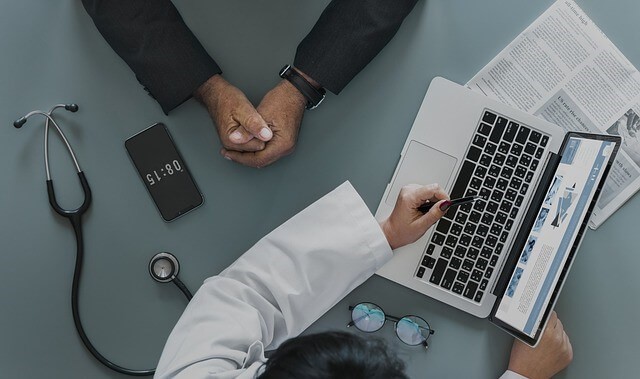Apr 27
2020
How COVID-19 Will Transform Healthcare With A Shift to Virtual Patient Care
By Michael Seres, founder and CEO, 11 Health.

Hospitals across the globe are experiencing a demand incomparable to any event that most of us have experienced in our lifetimes. Providers on the front lines of the coronavirus pandemic tirelessly and courageously dedicate countless hours and immeasurable amounts of energy to combat this virus, all while compromising their own safety and the safety of their families.
This strain on the health care system stretches far beyond patients with COVID-19, as people with chronic diseases such as diabetes, Crohn’s, cancer and their providers struggle with the best way to manage their illnesses. With few medical resources available and the risk of exposure to the virus, a new way of providing care is desperately needed.
The Case for Telehealth
One might ask how these patients receive the care they need if they are unable to physically visit their provider and support team. Many are being forced – or choosing – to wait indefinitely until the risk of exposure and provider demand declines. As the United States and every country moves forward and learns from this crippling pandemic, it is apparent that there is an absolute need for a bigger emphasis on remote patient monitoring and telehealth services to provide effective care. The need is so significant that legislation is being passed to support the uptake of remote treatment options and to ensure health care facilities have high quality internet connections.
Telehealth services allow patients to be seen by a provider through video calls, giving the traditional face-to-face feel that many experience in general appointments with their providers. However, the extent of the personal interaction may end with the action of the provider, such as a prescription or advice on at-home care options.
Remote Monitoring: From Improved Workflow to Empowering Self-Management
Remote patient monitoring typically includes a support platform that allows a patient to monitor and manage their disease, often with the support of their health care team, remotely and over a period of time. The term telehealth is often wrongfully used interchangeably with remote patient monitoring. The two work together, but are not the same. Telehealth interactions are often part of a larger, ongoing remote patient monitoring system.
There are various types of remote patient monitoring platforms. Some are created with the intent to enable easier workflow and patient management for the physician, others are created to support patient self-management. Some cardiology devices such as pacemakers and ICDs use remote patient monitoring directly by sharing data on the performance of the device and the heart’s response with the physician.
 It’s no secret that healthcare has greatly improved with the advent of technology. We all know the drill. The usual benefits that we’ve been able to derive from technology comes in the form of better data management, clearer communication, minimized margin of error, and the improved accuracy and efficiency of medical diagnoses.
It’s no secret that healthcare has greatly improved with the advent of technology. We all know the drill. The usual benefits that we’ve been able to derive from technology comes in the form of better data management, clearer communication, minimized margin of error, and the improved accuracy and efficiency of medical diagnoses.